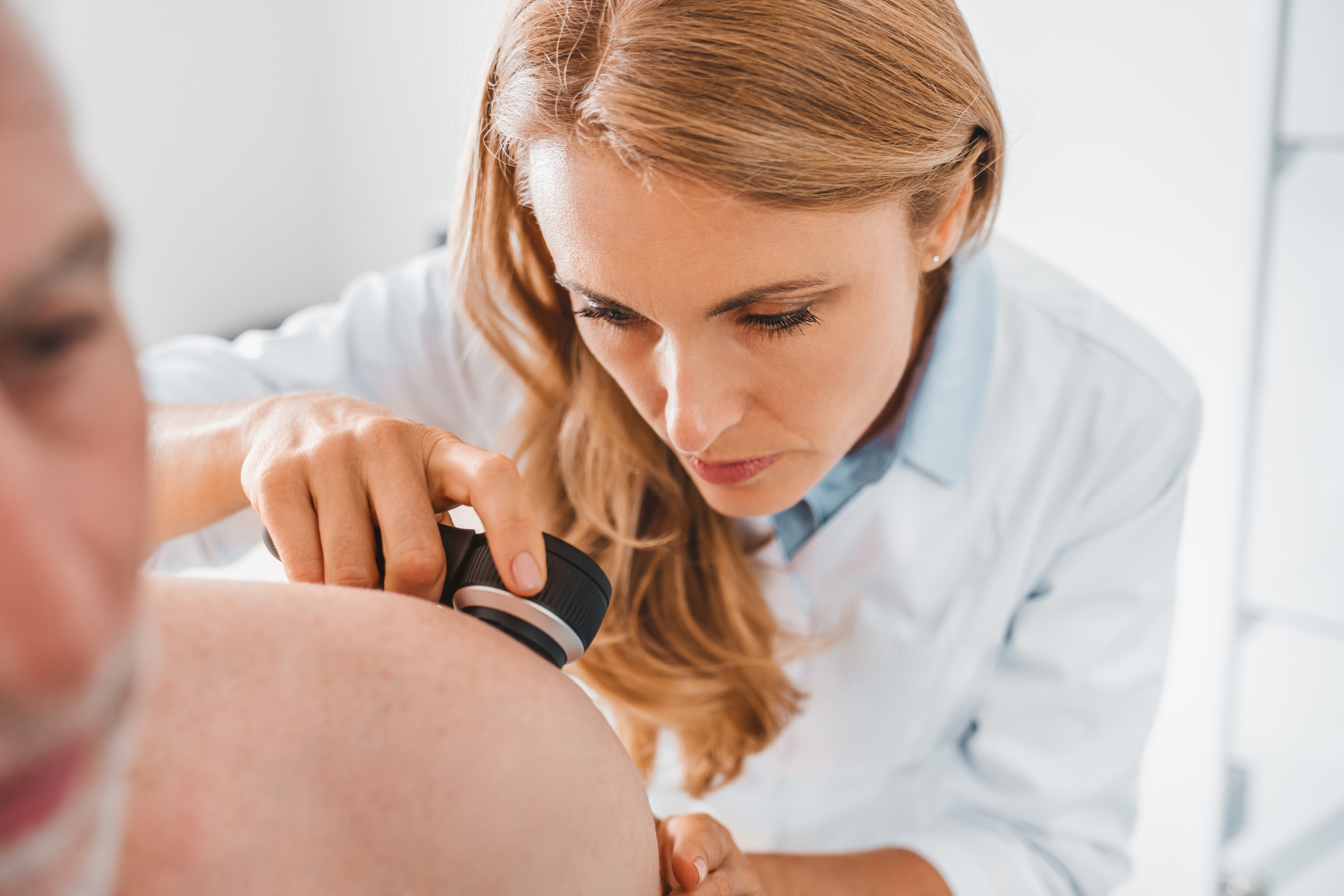Get Easy Health Digest™ in your inbox and don’t miss a thing when you subscribe today. Plus, get the free bonus report, Mother Nature’s Tips, Tricks and Remedies for Cholesterol, Blood Pressure & Blood Sugar as my way of saying welcome to the community!
The vitamin that halves the risk of melanoma

I recently visited my doctor when I became aware of a mole on my back that I couldn’t see, but that had seemingly appeared out of nowhere.
Because I’m over 65, I know that I’m at higher risk of developing melanoma, an aggressive form of skin cancer — so I don’t mess around with these things.
Fortunately, mine turned out to be a seborrheic keratosis, which is also common at my age, and not pre-cancerous.
Until recently, the common wisdom was that, other than avoiding too much sun and monitoring any changes in your skin, there wasn’t much you could do to prevent melanoma, especially if it runs in your family.
That’s changing, though. And I’m heartened to find out that something I’ve been doing for years might be reducing my risk…
How vitamin D battles melanoma
A Finnish study certainly seems to give a lot of credit to the sunshine vitamin for lowering the risk of melanoma.
This is great news since some past studies, which were based on serum (blood) levels of calcidiol (a vitamin D metabolite) have been contradictory.
The reason for that, according to the researchers, is that measuring serum calcidiol doesn’t provide accurate information on the metabolism of vitamin D in the human skin. That’s because our skin can express enzymes that generate biologically active vitamin D metabolites or inactivate them.
So for this study, researchers chose 498 adults determined to have an increased risk for skin cancers, including basal cell carcinoma, squamous cell carcinoma or melanoma. Dermatologists classified the patients into different skin cancer risk categories, namely low risk, moderate risk and high risk.
From there, the participants were divided into three groups based on their intake of vitamin D supplements: non-use, occasional use, or regular use.
The most outstanding finding?
There were considerably fewer cases of melanoma among those who regularly supplemented vitamin D than among non-users — and their future risk was way lower too…
In fact, regression analysis showed the risk for melanoma among regular users was considerably reduced — more than halved — compared to non-users.
Even the participants that had been classified as “occasional users” of vitamin D appeared to have a lower risk of melanoma than the non-users.
The findings confirm previous research that has associated low vitamin D levels with more aggressive melanomas. In 2016, Julia Newton-Bishop, a professor of dermatology at the University of Leeds, found that lower levels of vitamin D are associated with thicker tumors and poorer survival.
An extra layer of protection
Even though vitamin D supplementation shows much promise in the battle against melanoma it did not seem to be effective for basal cell or squamous cell carcinoma, nevus count, actinic keratoses or photoaging.
So, in addition to vitamin D, add other nutrients to your diet that have shown effectiveness against photoaging, like resveratrol. Resveratrol is known as an anti-aging antioxidant, and skin aging/sun damage is the result of oxidative stress from UV radiation.
It’s still important to follow all the old-school advice like avoiding too much sun, wearing a safe, non-toxic sunscreen, regularly performing self-checks and seeing a dermatologist at least once a year. But the right nutrients can provide an additional layer of protection, working from the inside out.
In the United States, the current daily vitamin D recommendation for adults is 600 IU through age 70 and 800 IU for age 71 and older. But findings in recent years show that may be inadequate and taking higher doses of vitamin D certainly isn’t harmful.
According to the Mayo Clinic, vitamin D toxicity may occur in adults taking 60,000 IU per day for several months.
It’s commonplace for experts to regularly recommend sensible daily doses of vitamin D at 2000 IU and 5000 IU, especially in light of the fact that researchers have challenged the intake of vitamin D recommended by the National Academy of Sciences (NAS) Institute of Medicine (IOM), stating that their RDA for vitamin D underestimates the need by a factor of ten.
Stay vigilant: Know the signs
The most important thing about melanoma is to catch it early. This makes it treatable, rather than a death sentence.
Here’s what to look for if you have a suspicious or new mole.
- A is for asymmetrical shape. Look for moles with irregular shapes, such as two very different-looking halves.
- B is for irregular border. Look for moles with irregular, notched or scalloped borders — characteristics of melanomas.
- C is for changes in color. Look for growths that have many colors or an uneven distribution of color.
- D is for diameter. Look for new growth in a mole larger than 1/4 inch (about 6 millimeters).
- E is for evolving. Look for changes over time, such as a mole that grows in size or that changes color or shape. Moles may also evolve to develop new signs and symptoms, such as new itchiness or bleeding.
Editor’s note: Did you know that when you take your body from acid to alkaline you can boost your energy, lose weight, soothe digestion, avoid illness and achieve wellness? Click here to discover The Alkaline Secret to Ultimate Vitality and revive your life today!
Sources:
Fewer cases of melanoma among people taking vitamin D supplements — Science Daily
Regular use of vitamin D supplement is associated with fewer melanoma cases compared to non-use: a cross-sectional study in 498 adult subjects at risk of skin cancers — Melanoma Research
Vitamin D levels can affect aggressiveness of melanomas — The Pharmaceutical Journal












